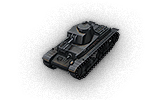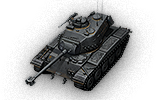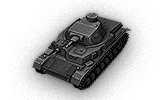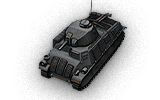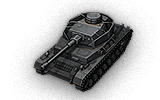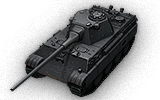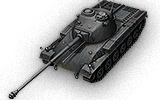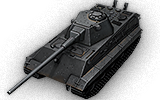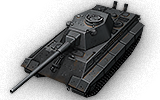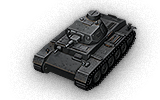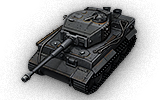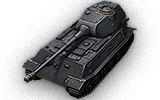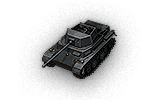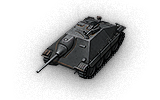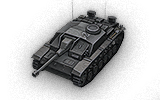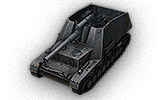Germany

Armored fighting vehicles attributed to either National Socialist (World War II) Germany and countries which that entity absorbed (such as Czechoslovakia) or the post-war Federal Republic of Germany or respectively the German Democratic Republic. A disproportionate number of the most famous and celebrated vehicles in armored warfare hail from this region, making it one of the key factions in World of Tanks.
Wehrmacht tanks have an emphasis on accurate guns with smaller average calibers but good rate of fire and velocity. Their armor can grant good protection but tends to be less thick than a comparable Russian tank, and usually less reliable due to worse sloping and angling. They are about average or slightly higher in mobility and view range but tend to trail their American counterparts in maneuverability, and are a bit heavier too. As well as this, they have large health pools. While German tanks are very specialized there is vast selection of German tanks to fill all roles; arguably each German tank fights in a way unique from any other one. Various famous tank project, prototypes, and vehicles were build/planned in this era, with competition from three major companies: Locomotive Developer Henschel and Son (H), Motor Developer Porsche (P), and Weapon Developer Krupp (K) to design the best tanks to offer the German Army.
However post-War Bundeswehr tanks follow an entirely different philosophy, favoring maneuverable and versatile platforms with balanced guns in exchange for completely negligible armor protection. These post-war tanks are ideal support tanks but otherwise will be hard-pressed to succeed where earlier German tanks would excel.
German light tanks are rounded in capability. They have well-armored fronts for light tanks and are able to bounce shots to their sloped fronts if angled correctly. Low and mid tier light tanks have powerful autocannons and howitzers available, while from Tier VII Bundeswehr tanks have accurate 90mm sniper weapons. They also tend to weigh more than their counterparts, making ramming opposing light tanks and even some light mediums and tank destroyers a viable option. Started from the Spähpanzer SP I C at Tier VII brings the best of the Bundeswehr tradition: fast, nimble, and well-armed, and then separate into the two Bundeswehr line: The Leopard 1 Medium tank and The Rhinemetall Panzerwagen to finish the line's last three tiers.
German medium tanks tend to be kept at a longer distance than their counterparts, but the accurate German guns will make short work of your enemies. There are two lines: the Panther/E-Series line, which consists of very flexible long-ranged counter-assault and flank/wing units, boasting well-armored fronts; and the Daimler-Benz/Leopard 1 line, which consists of more mobile but less-armored spotter and support units that are also capable harrassment and flanker tanks. The lower tiers of the E50M line up to tier VI tend to be more agile with less firepower while the higher tiers tend to have more armor and firepower while sacrificing agility. The Leopard 1 line tanks tend to offer excellent guns and mobility, and lackluster armour. In comparison with their peers, they tend to have slightly better hull armor in exchange for weaker turret armor, allowing for better use in urban environments while reducing the effectiveness of hull-down positions, though the smaller turrets partially negate this disadvantage.
German heavy tanks are best used in a collected manner: either to deflect enemy pushes, control space, and anchor attack lanes; or absorb damage for the team, while slowly crawling towards the enemy base and chewing away at enemy weakspots. While they can snipe well with good accuracy, this tactic is often misued as these tanks are better at reacting to enemy movements and that task is best left to tank destroyers. they tend to rely on angling the hull to thicken the armour enough to absorb hits, especially at mid-tier where their armor tends to be boxy. They have thick armor all around the sides, but share a common weakness in a weaker lower glacis plate, allowing lower tier guns to penetrate their otherwise sturdy frontal armor. There are three lines: the Porsche (Maus), the Krupp (Panzer VII) and the Henschel/Entwicklung (E-100) lines; they shared fairly similar in playstyle as counter-offensive heavies, although the Maus boasts more surivability while Henschel heavies tend to trade a little survivability for slightly improved mobility and damage-per-minute. Notably the E-100 of the Henschel line sports the highest alpha damage of all heavy tanks. Meanwhile, the Krupp's Panzer VII sacrifice its all-around protection for Insane frontal protection and above average mobility compared to E-100 and Maus. All of three lines boast some of the largest and certainly the heaviest tanks in the game at their ends, with the Panzer VII weighting 120 tonnes, the E-100 weighing 130 tonnes, and the Maus weighing a whopping 188 tonnes, 8 tonnes more than a Blue Whale.
German tank destroyers have two starkly different lines, starting from the tier III Marder II. The first is the armoured Jagdpanzer (tank hunter) line, similar to the standard Russian TD line, with mobile, well-armed units that have good camo values, but they swap their concealment out in order to evolve into slow moving, well-armored, high-dpm behemoths with the end of the line being the JagPzE100, having a 17 cm gun that has incredible single-shot power. The second line is the Waffentrager (cannon carrier) or 'Glass Cannon' line, with units that have paper-thin armor and good camo values, but boast generally larger guns with faster reload speeds. This line ends at the Grille 15, which gets a 15 cm gun with an above average reload for such a high caliber (14 seconds!) and the most accurate gun in the game to boot.
German self propelled guns are accurate and quite maneuverable, allowing them to quickly change position after firing to evade any counter-fire lobbed in their direction. They share a unique feature with the US Tech Tree of having a second artillery line from Tier 3-4. They split from the G. Pz. and reunite at Tier 5 (Grille). One line (Wespe Line) features accuracy and range over damage, whilst the other line (Bison Line), favors more damage and Gun Elevation (75) at the cost of range and ammo capacity. They may not have as much firepower as their counterparts, but are unmatched in their accuracy. However, the German SPGs generally have very narrow gun arcs, resulting in the need to turn the hull of the tank frequently, which can cause accuracy to decline sharply if this is not timed correctly. It's best to keep them safe and far away, where their accuracy's utility really stands out and shines, keeping them competitive, as well as reducing the angular problem of their narrow gun arcs. The highest tier SPGs, are however, are less like their lower tiered brethren: They are large and slow to turn, while their armament is decidedly middle of the road, especially in terms of playstyle. More powerful and faster firing, but less accurate than the French and Russians; but not as powerful as the Americans or British.
Light Tanks
Medium Tanks
Heavy Tanks
Tank Destroyers
Self-Propelled Guns
1







